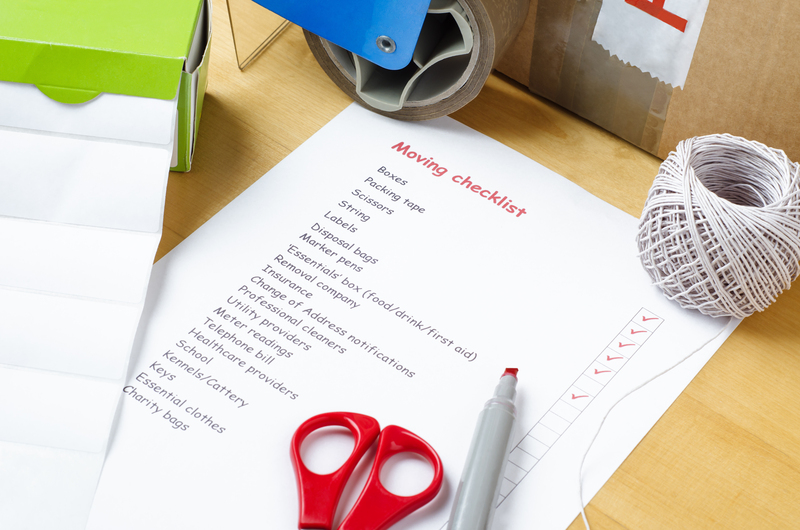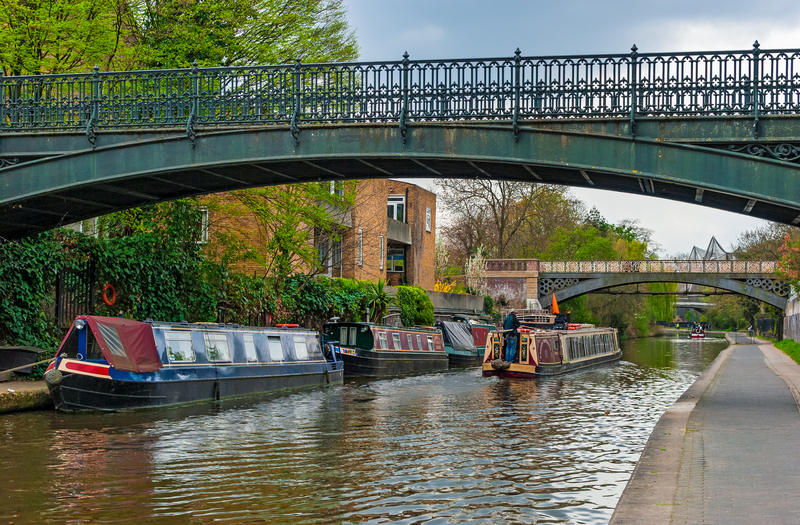Why Handling Piano Moving Alone is a Risky Choice
Posted on 22/05/2025
Why Handling Piano Moving Alone is a Risky Choice
Relocating a piano is not an everyday undertaking. With their imposing size, considerable weight, and delicate mechanisms, pianos require meticulous planning, specialized equipment, and expert handling. Tempting as it may be to save money by managing the move yourself, tackling piano relocation solo can quickly turn into a costly, risky ordeal. In this comprehensive article, we'll explore why moving a piano on your own is dangerous, the potential risks involved, and the immense advantages of hiring professional piano movers.
The Complexity of Pianos: More Than Meets the Eye
The elegant exterior of a piano belies a marvel of engineering. Whether you own a sturdy upright piano or a grand piano, these instruments are complex devices with thousands of intricate parts. Inside, you'll find:
- Over 10,000 moving components
- Stretched strings under extreme tension (up to 20 tons)
- Fragile felt hammers and delicate keys
- A finely balanced cast iron plate
- A sensitive soundboard contributing to the instrument's unique resonance
Because of their design, pianos are very sensitive to tilting, jostling, and abrupt movements. Improper handling can jeopardize both the internal workings and the carefully calibrated musical tone of your instrument. This makes moving a piano alone a treacherous choice.

The Heavy Truth: Pianos Are Incredibly Weighty
While pianos look elegant and sleek, their sheer weight is daunting. Moving an upright piano by yourself or with untrained help poses substantial risk due to:
- Average upright piano weight: 300-500 pounds
- Baby grand and grand pianos: 500-1,400+ pounds
This immense weight isn't evenly distributed--pianos are top-heavy and awkwardly balanced. Amateur movers often underestimate the challenge of maneuvering such bulk through doorways, stairs, and tight turning spaces. Handling piano moving alone significantly increases the risk of dropping the instrument or causing property damage.
The Hidden Dangers of Improper Handling
Even a minor misjudgment can have catastrophic consequences. Taking on piano moving solo exposes you to numerous hazards:
- Personal injury: Strains, sprains, back injuries, crushed fingers, and even more severe accidents are common when lifting heavy loads without training.
- Piano damage: Scratched surfaces, cracked soundboards, broken legs, bent pedals, and jammed mechanisms can occur. These repairs can cost hundreds or thousands of dollars.
- Property damage: Dropped or dragged pianos can gouge floors, scuff walls, shatter tiles, or dent door frames.
- Lost resale value: Even seemingly minor cosmetic damage can dramatically decrease your piano's market value.
Ultimately, repairing damages or injuries caused by a DIY move usually costs far more than hiring professionals from the start.
Specialized Equipment: What Professional Piano Movers Use
Expert movers don't just rely on brute strength. They utilize specialized tools and techniques that the average homeowner simply doesn't possess:
- Piano skids and boards: Custom devices that keep pianos balanced and protected while moving and lifting.
- Heavy-duty moving straps: Designed to distribute weight safely and prevent slipping.
- Padded dollies: Engineered to support the instrument's weight while minimizing vibrations and shocks to the internal components.
- Protective blankets and wrappings: Shield the finish and delicate surfaces from dings or scratches.
- Ramps and hoists: Essential for navigating stairs, loading into trucks, or overcoming tight spaces.
Without these equipment and years of experience, amateur efforts at moving a piano alone are almost guaranteed to go awry.
Examples of DIY Piano Moving Gone Wrong
If you're uncertain about the risks, consider these common scenarios:
- The Stairs Catastrophe: Attempting to slide a piano down a flight of stairs, only for it to become unmanageable and tumble, causing injury or destruction.
- The Tight Doorway Disaster: Misjudging the piano's dimensions, getting stuck in a doorway, or damaging both the frame and the instrument's exterior.
- Improvised Equipment Failure: Using furniture dollies not designed for pianos, resulting in lost control and possible tipping.
- The Solo Lifter's Regret: Trying to maneuver even an upright piano alone, leading to pulled muscles, herniated disks, or a dropped piano.
Unfortunately, online videos are full of such horror stories, each an expensive lesson on why handling piano moving alone is a risky choice.
Insurance Doesn't Always Cover DIY Moves
Another overlooked problem is insurance. Many homeowners' or renters' insurance policies won't cover damage incurred during a self-managed move.
- Professional piano movers usually offer specialized coverage for your instrument, protecting you from repair or replacement costs in the rare event of an accident.
- If you move the piano yourself and something goes wrong, you may be left with the entire bill.
This alone is a compelling reason to avoid the temptation of moving your piano on your own.
Reasons to Choose Professional Piano Moving Services
You might think, "I'm strong. I can manage." However, professional piano movers are not just strong--they're trained. Here's why you should always call in the experts:
- Experience: Movers understand pianos' structural vulnerabilities and know exactly how to dismantle, secure, transport, and reassemble them safely.
- Efficiency: Trained teams complete moves quickly and with minimal disruption.
- Proper tools: All the right pads, boards, and dollies to prevent disaster.
- Insurance protection: Peace of mind that your investment is safeguarded.
- Reduced stress: No need to worry about the logistics, potential injuries, or unexpected mishaps.
When you weigh the cost of hiring professionals against potential medical bills, repairs, or property renovations after an accident, the added investment is minimal.
Common Myths About DIY Piano Moving
- Myth: "If I have strong friends, I'll be fine."
Fact: Strength is only a small part of piano moving--the right technique, equipment, and experience are critical. Well-meaning helpers can still end up hurt or cause damage. - Myth: "It's just like moving other furniture."
Fact: Pianos have center-of-gravity issues, delicate components, and are far heavier than most furniture items. - Myth: "Upright pianos are easy to move."
Fact: Even small uprights can weigh over 300 pounds and topple easily if mishandled. - Myth: "I can save a lot of money."
Fact: Repairs, replacements, or hospital bills can quickly erase any savings from skipping professional moving services.
How Professional Piano Movers Approach the Job
Hiring professionals means your piano is in knowledgeable hands. Here's a quick look at the step-by-step process:
- Pre-move assessment: Movers evaluate the piano, access routes, and obstacles.
- Dismantling (if needed): Components like legs or lyres are removed to simplify movement and prevent breakage.
- Securing the instrument: The piano is wrapped, strapped, and positioned on a custom skid board or dolly.
- Careful navigation: With teamwork and precision, the movers maneuver through doorways, stairs, and elevators without banging or scraping.
- Safe transport and unloading: The instrument is kept upright, stabilized, and reassembled at its destination.
This methodical approach minimizes risk, protects your investment, and ensures your piano's lasting beauty and sound quality.
Long-Term Benefits of Using Professional Movers
- Preservation of tone and value: Your piano continues to sound its best for years to come.
- No surprise injuries or repair costs: Peace of mind and a smoother moving experience.
- Time savings: Avoid the stress and extended downtime of a DIY disaster.
The Environmental Factor: Humidity and Tuning Shifts
Environmental changes during a move--such as transitions from air conditioned interiors to humid exteriors--can cause sensitive components to warp or go out of tune. Professional piano movers know how to minimize these impacts, ensuring your piano is stabilized throughout transit and recommending post-move tuning and acclimatization.
When Is it Ever Okay to Move a Piano Yourself?
Rarely. You might get away with moving a very small spinet piano (under 300 pounds) on the ground floor with several strong helpers, appropriate equipment, and very short distance. Even then, the risk remains high. For grand pianos, flights of stairs, or long travel distances, professional help is not just recommended--it's imperative.

What to Look for in a Professional Piano Moving Company
Not all moving companies are created equal. For optimal safety, seek out specialists:
- Piano moving experience: Verify that the team has specific expertise with all types of pianos.
- Proper equipment: Ask what tools and techniques are used for protection and transport.
- Insurance: Insist on full liability coverage for peace of mind.
- References and reviews: Check testimonials and ask for recommendations.
The relatively small cost difference is worth avoiding the emotional and financial stress of piano damage or injury.
Final Thoughts: The Smart Choice for Piano Moves
In summary, handling piano moving alone is a risky choice not just for your piano's wellbeing, but for your health, your property, and your wallet. These treasured instruments deserve the respect and specialized handling that only expert movers can provide. Sparing a little extra expense at the outset is the wisest move you can make--ensuring your piano inspires music for generations, rather than painful lessons and regrets.
Ready to relocate your piano? Seek out a reputable, experienced piano moving service in your area and give your instrument--and yourself--the protection you both deserve.



 Guide price for the hire of a Transit Van /up to 300 cu ft/.
Guide price for the hire of a Transit Van /up to 300 cu ft/.